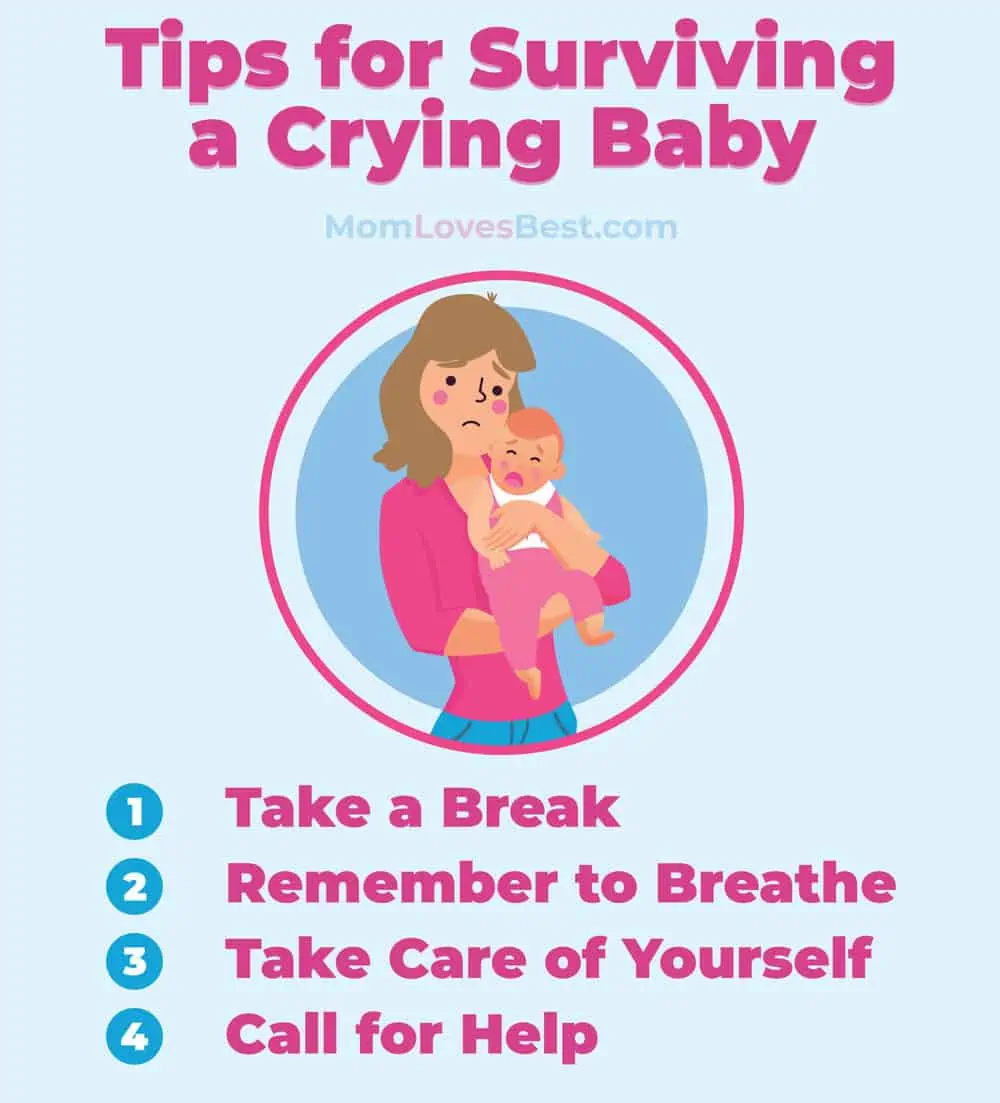Did you know your baby is actually speaking a secret language? During those first few blurry months, it might feel like the crying never stops. It is easy to feel overwhelmed when you cannot figure out what is wrong.
However, there is a way to decode those wails. Understanding what your baby is trying to say is not a superpower reserved for nannies; it is a skill you can learn. By the end of this guide, you will know exactly what those different sounds mean and how to soothe your little one (and save your sanity).
Key Takeaways
- Babies use distinct phonetic sounds to communicate specific needs like hunger, sleepiness, and gas.
- Overstimulation and boredom are common triggers that require opposite soothing techniques.
- Colic involves intense, continuous crying for more than three hours but typically resolves by the fourth month.
- Trust your instincts; if a cry sounds weak or is accompanied by fever, consult your doctor immediately.
Types of Baby Cries and What They Mean
Until they can speak, crying is your baby’s primary form of communication. It is not always negative; sometimes, it is simply a reflex or a request for a cuddle. Many experts refer to the “Dunstan Baby Language,” a theory suggesting all babies make five universal sounds based on physical reflexes (1).
Here are eight common cries and how to decode them:
1. Tired
Newborns sleep a lot (10 to 18 hours a day), but their patterns are irregular. They often mix up day and night. Sleep is vital for their development, but they often need your help to settle down before they reach the point of exhaustion (2).
What to Listen for
Listen for an “Owh” sound. The mouth forms an oval shape, which is essentially a yawn reflex turning into a cry. It sounds helpless and breathy.
What to Do
Catch them before the meltdown. Watch for physical cues like yawning, rubbing eyes, or red eyebrows (3).
Establish a routine. Your baby likely gets tired around the same time daily. Try to put them in the crib while they are drowsy but still awake.
If they are overtired, they might look restless or fight sleep. In this case, swaddling is a lifesaver. It mimics the womb and prevents their startle reflex from waking them up.
If your baby hates the swaddle (some do), try a dark room and white noise.
2. Overstimulated
Babies love interaction, but their sensory threshold is low. A room full of passing relatives, loud TVs, or bright lights can quickly overload their system.
What to Listen for
This cry is often a “Heh” sound. It can sound whiny, fussy, or frantic. It is distinct from the hunger cry and often gets louder if you try to play with them.
What to Do
Cut the noise. Your baby needs a sensory detox. Look for early signs like turning their head away, clenching fists, or avoiding eye contact.
If you are home, turn off the TV and dim the lights. Avoid rocking them vigorously; instead, hold them still against your chest.
The AAP has updated its recommendation on screen time usage for infants and toddlers. Aside from FaceTime or Skype social interactions, screened devices are not recommended under the age of 2 (4)
It may seem as if your little one really enjoys watching videos and is adept at using these devices. This does not mean that doing so is beneficial. In clinical practice, I support the AAP recommendations but understand that complete avoidance is not always practical. I suggest that parents reserve screen time for situations such as plane rides, long car rides, or restaurants where fun distractions are often necessary.
Editor's Note:
Dr. Leah Alexander, MD, FAAPIf you are at a grocery store or a party, step outside or go to the car for a few minutes of silence.
White noise works wonders here too. A shushing sound, a fan, or even a vacuum cleaner can break the crying cycle. The rhythmic sound helps them block out the chaos.
3. Bored
Conversely, boredom is real. If your baby has been awake and in the same spot for a while, they might just want a change of scenery.
What to Listen for
This cry starts as a coo or a fuss and slowly builds up. It is not urgent or piercing. It stops the moment you pick them up or interact with them.
What to Do
Engagement is key. Grab a favorite toy, sing a song, or simply move them to a different room.
However, do not rush in immediately. Pause for a moment. This gives your baby a chance to observe their hands or look around, which encourages self-soothing skills (5).
4. Hungry
This is the one you will learn fastest. Newborns eat every two to three hours, so this alarm goes off frequently.
What to Listen for
Listen for a “Neh” sound. This sound is produced when the baby’s tongue touches the roof of their mouth in a sucking reflex. It is rhythmic, repetitive, and demanding.
What to Do
Feed the baby. Before they start screaming, look for hunger cues like rooting (turning head to seek breast), lip-smacking, or sucking on fists.
If you are bottle-feeding, pace yourself to avoid overfeeding. If it has been less than two hours and they are fussy, check for other issues first (6).
5. Uncomfortable
This category covers everything from a wet diaper to a scratchy tag or feeling too hot.
What to Listen for
This cry is often nasal and whiny. It sounds nagging rather than frantic. It persists until you fix the specific annoyance.
Infants don’t need multiple layers of clothing to stay warm at night. In most cases, a simple onesie is sufficient. If you check on your baby and their hands and feet feel very warm or almost look red, they are probably too warm. Also, keeping an infant too warm increases the risk of SIDS (7).
Editor's Note:
Dr. Leah Alexander, MD, FAAPWhat to Do
Run a quick diagnostic check:
- Check the diaper: A wet or dirty diaper is the most common culprit.
- Check temperature: Feel their chest or back. If they are sweaty, remove a layer.
- Check specifically for burps: If they squirm after eating, a trapped air bubble is likely the cause (8). Burp them thoroughly.
In practice, I emphasize the importance of burping. When infants feed, especially from a bottle, they tend to swallow air, which can accumulate in the stomach. This also occurs when babies feed very quickly. If stomach air is not expelled in a burp, it passes to the intestines, resulting in abdominal distension and discomfort.I recommend two burping positions: holding the infant over a shoulder or placing them belly down over your lap. You may have noticed others holding babies upright while supporting the chin to burp. Unfortunately, this is not the most effective position. The outer belly muscles are “crunched” in this position, and less air is expelled. This can result in a very fussy baby.
Editor's Note:
Dr. Leah Alexander, MD, FAAP6. Pain
Pain cries are distinct and trigger an immediate adrenaline rush in parents. It is usually gas or constipation, but it can be external.
What to Listen for
Listen for an “Eairh” sound. It is a lower-pitched, grating sound that comes from the belly. It is often a long scream followed by a pause (as they hold their breath) and then another scream.
What to Do
If it is gas, bicycle their legs or use a pacifier. The sucking motion helps relax their gut.
Check for the “hair tourniquet.” Inspect their toes and fingers to ensure a stray hair isn’t wrapped around them, cutting off circulation (9).
If the crying occurs during feeding and they arch their back, it could be Reflux (GERD). Keep them upright after feeds and consult your pediatrician (10).
7. Colic
Colic is defined by the “Rule of Three”: crying for more than three hours a day, three days a week, for three weeks. It usually peaks around six weeks and resolves by month three or four.
What to Listen for
It is intense, loud, and seemingly inconsolable. The baby may clench their fists and pull their legs up. It often happens in the late afternoon or evening (the “witching hour”).
What to Do
This is about survival and management, as there is often no “cure” other than time. Try these soothing techniques:
- The Football Hold: Hold your baby face down along your forearm, supporting their head. The pressure on the tummy can help.
- Motion: A car ride, a stroller walk, or a swing can reset their rhythm.
- Sound: Loud white noise (like a vacuum or hair dryer) mimics the womb and calms the nervous system.
- Swaddle: Keep them tight and secure.
Parental Burnout
8. Sick
If your baby is usually happy but suddenly miserable, check for illness.
What to Listen for
A sick cry is often weaker than a normal cry. It sounds like a low-energy whimper. Alternatively, if it is an ear infection, it might be a sharp scream when lying down.
What to Do
Check for fever (rectal is most accurate for newborns), vomiting, or a rash. If your baby is under three months and has a fever, call the doctor immediately. Trust your gut; you know your baby best.
Mystery Cries and What to Do
Sometimes, you will check the diaper, offer food, and burp them, yet the crying continues. This is normal.
Newborns cry an average of two to three hours a day (12). It is their way of decompressing after a day of learning and growing.
If they are clean, fed, and safe, it is okay to let them fuss for a few minutes. Some experts suggest this helps them settle into sleep (13). Try a change of environment: step outside for fresh air or give them a warm bath to reset their mood.
The Don’ts of Baby Crying
Hearing your baby cry triggers a stress response. It is hard to think clearly when the alarm is blaring. Here is what to avoid:
1. Don’t Panic
Your baby feeds off your energy. If you are frantic, they will be too. Take a deep breath. You are not a bad parent because your baby is crying; you are a parent with a baby who is communicating (14).
2. Don’t Ignore It Forever
While a brief pause is fine, ignoring a newborn for long periods is not recommended. They cannot be “spoiled” at this age. Responding quickly prevents the cry from escalating into a full-blown meltdown that is harder to soothe.
3. Don’t Punish
Babies do not cry to manipulate you. They cry to express a need or a feeling. “Timeouts” or anger will confuse and frighten them.
4. Never Shake Your Baby
This is the most critical rule. If you feel your anger rising to a dangerous level, put the baby down in a safe place (like the crib) and walk away for 10 minutes.
Shaken Baby Syndrome
Tips for Surviving a Crying Baby
Parenting is a marathon, not a sprint. To take care of your baby, you must take care of the caregiver.
1. Tag Team
You do not need to be a martyr. If you have a partner, trade shifts. If you are solo, ask a trusted friend or grandparent to hold the baby for an hour so you can shower or nap.
2. Use Mantras
When the crying is endless, repeat to yourself: “This is just a phase.” Or, “They are having a hard time, not giving me a hard time.” It helps shift your perspective.
3. Move Your Body
Put the baby in the stroller and walk. The fresh air and exercise reduce stress hormones for both of you (16).
4. Seek Support
If you feel depressed, detached, or unable to cope, call your doctor. Postpartum depression and anxiety are common and treatable. You do not have to white-knuckle this alone.
Decoding Baby Crying FAQs
Hang in There
Decoding your baby’s cries takes time, but you will get the hang of it. Listen for the subtle differences between a “Neh” and an “Owh,” and trust your instincts.
Remember, this intense crying phase is temporary. Keep your cool, lean on your support system, and know that silence (and sleep) will eventually return to your home.













